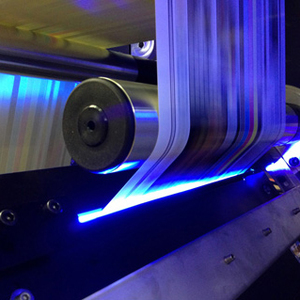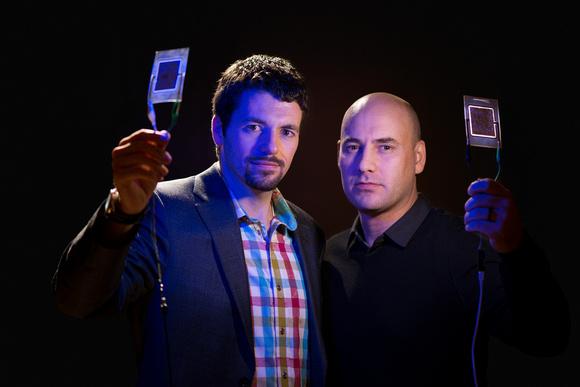 What if you could just print light on whatever you wanted? We’re watching 3D printing make progress in nearly every arena, so using it for creating one of the most basic needs we have on a daily basis seems only logical.
What if you could just print light on whatever you wanted? We’re watching 3D printing make progress in nearly every arena, so using it for creating one of the most basic needs we have on a daily basis seems only logical.
We’ve long been using creations of light based on inventions from historical geniuses and technological giants. Today though, as 3D printing advances, you will be headed in the direction of printing your own lighting with the help of US-based Rohinni and their new product, Lightpaper.
While we aren’t quite ready to unscrew all the lightbulbs in the office and throw them out, the idea of replacing them eventually with thin sheets of 3D printed light is a stunning consideration.
 With 3D printing being conducive to embedding a multitude of different technologies and electronics, 3D printing with light should prove to offer new innovation and flexibility for manufacturers. While Rohinni does have mild competition in the area, they do have one completely unique factor: Their product is razor thin. And flexible. And 3D printable.
With 3D printing being conducive to embedding a multitude of different technologies and electronics, 3D printing with light should prove to offer new innovation and flexibility for manufacturers. While Rohinni does have mild competition in the area, they do have one completely unique factor: Their product is razor thin. And flexible. And 3D printable.
According to Rohinni, the emergence of printable light is on par with 3D printing in terms of new possibilities and application potential. With a number of different mindblowing and innovative methods used to merge technologies with 3D printing and electronics, this form of lighting, which can be produced rapidly and affordably, could offer use and advancement in various applications for consumer products, and specialized areas such as automotive, for headlights.
They are the only company working to 3D print paper using an innovative method combining ink and tiny LEDs which are printed out on a conductive layer and then sandwiched between two other layers, lit up with LED current.
 Light goes hand in hand with technology, and often creates that wow factor because, quite simply, it catches the eye. Rohinni is working to spotlight their technology in a bid to gain the attention of industry movers and shakers who would benefit from its applications.
Light goes hand in hand with technology, and often creates that wow factor because, quite simply, it catches the eye. Rohinni is working to spotlight their technology in a bid to gain the attention of industry movers and shakers who would benefit from its applications.
OLED (organic light emitting diodes) technology is a competing force for this product, in their use of LED technology in a series of thin, light emitting films, most commonly used to power televisions these days. But Rohinni’s eventual mainstream direction will be for backlighting for gadgets and everyday objects.
With the goal for Lightpaper to be available to the hobbyist market eventually, 2015 is the target date to bring the 3D printed light source to the commercial and industrial marketplace. They are currently still working to streamline and perfect the product.
Is this something you have thought about that would work with the technology of 3D printing? What do you think this will be useful for in particular? Tell us your thoughts in the World’s Thinnest Light forum over at 3DPB.com.
Subscribe to Our Email Newsletter
Stay up-to-date on all the latest news from the 3D printing industry and receive information and offers from third party vendors.
You May Also Like
Air Force Awards Fortius Metals $1.25M to Qualify 3D Printing Wire for Hypersonic Applications
AFWERX, part of the US Air Force Research Laboratory (AFRL), awarded a Direct-to-Phase II Small Business Innovation Research (SBIR) contract worth $1.25 million to Colorado’s Fortius Metals, to accelerate qualification...
US Air Force Awards JuggerBot $4M for Large-format Hybrid 3D Printing
Large-format 3D printer manufacturer JuggerBot has received a $4 million grant to develop a large format 3D printer, courtesy of the Under Secretary of Defense, Research and Engineering Manufacturing Technology...
Where Have All AM’s Unicorns Gone?
In the rapidly evolving world of 3D printing, startups valued at over a billion dollars, known as unicorns, once seemed as fantastical as the mythical creatures themselves. While a few...
How My Childhood Fascination with Planes Led to Investing in 3D Printing
My fascination with aerospace started young, and I started studying planes–identifying them in the sky and learning everything I could about how they work. Fast forward to my first week...
































